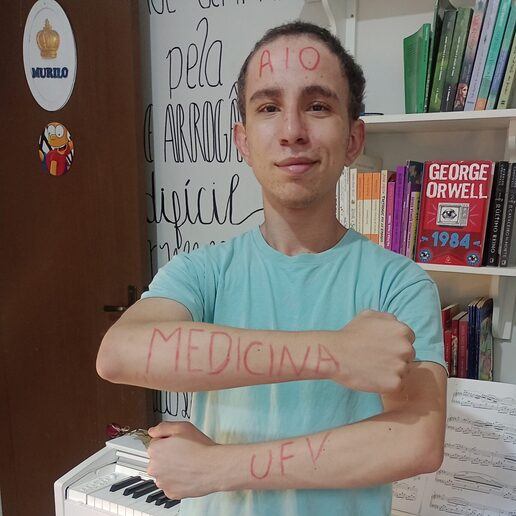FGV-RJ Administração, C. Sociais, Direito, História 2013
RADIATION AND EVOLUTION
1 THE disaster last year at the Fukushima Dai-ichi nuclear power plant, caused by an earthquake and tsunami, scored seven on the International Nuclear and Radiological Event Scale (INES). No worse rating exists. Radiation is harmful to living things, yet the long-term effects of persistently high levels of background radiation on ecosystems are poorly understood. With this in mind, a team led by Timothy Mousseau of the University of South Carolina and Anders Moller of the University of Paris-Sud set out to compare bird species dwelling near the Fukushima plant with those living at the site of another nuclear incident that scored a seven on the INES: the Ukrainian town of Chernobyl, where disaster struck in 1986. Remarkably, they found that some species seem to develop a tolerance for radioactivity over time.
2 Fukushima and Chernobyl are more than 7,000km (4,350 miles) apart, but Dr Mousseau and his colleagues soon realised that the two sites had much in common. Both are in areas that have a temperate climate with species that have similar habits and needs. And both are surrounded by a mixture of farmland and forest. Upon closer examination the researchers found that 14 species of bird lived in both regions, including the barn swallow, great tit, great reed warbler, buzzard and Eurasian jay. With so many similarities between the two places, a comparison of the biological responses to radiation in each (recent in Fukushima; long-term in Chernobyl) would surely be illuminating.
3 To do this, during July 2011, the researchers counted and identified birds at 300 locations near Fukushima that had radiation levels as low as 0.5 microsieverts per hour and as high as 35 (for comparison, dental X-rays rarely expose patients to more than 0.05 microsieverts). Then they compared these results to bird data collected in areas that had the same range of radiation levels near Chernobyl between 2006 and 2009.
4 Their results show that as radiation levels in an area rose to 35 microsieverts per hour, the average number of birds dropped by almost a third compared with the areas where radiation levels were only 0.5 microsieverts per hour. This makes sense: in those areas with a high level of radiation, living things would tend to die or sicken and fail to reproduce. However, when researchers looked at the 14 bird species that lived in both regions, they found that the same level of radiation was associated with twice as large a drop in bird numbers in Fukushima as in Chernobyl.
5 The reasons for this are not clear. It is possible that the composition of the radionuclides are proving more dangerous to the Fukushima birds than they are to the birds near Chernobyl. But Dr Mousseau suggests a more likely explanation is that evolution has already been at work near Chernobyl, killing off individual birds that cannot cope with the background radiation and allowing the genes of those that have some tolerance to be passed on. The birds at Fukushima are only beginning to face the evolutionary challenge of living in a radioactive world.
Adapted from The Economist, March 3, 2012
In the last paragraph, “this” in the sentence “The reasons for this are not clear” most likely refers to which of the following phenomena?
Though the Fukushima and Chernobyl regions received a similar amount of radiation, relatively more birds disappeared from the Fukushima region than disappeared from the Chernobyl region.
Sterility was more prevalent in Fukushima birds than in Chernobyl birds, even though both groups of birds were exposed to similar levels of radiation.
Though Fukushima and Chernobyl are situated in identical environments, birds in the Fukushima region are generally smaller and less healthy than are similar birds in the Chernobyl region.
Timothy Mousseau and his colleagues discovered that, in many cases, a region’s environment protects animals against high levels of radiation.
Though the same types of birds were exposed to similar levels of radiation in the Fukushima and Chernobyl regions, the Fukushima birds in general remained healthier than the Chernobyl birds.
E mais: nota TRI a todo o momento.





